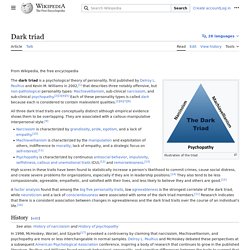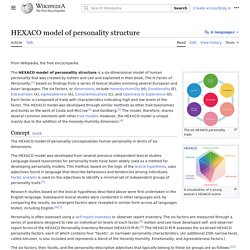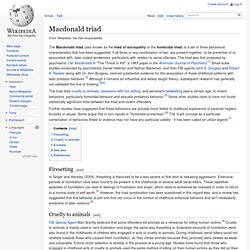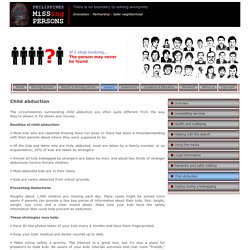

Michael Recto
Call for submissions para sa Taas-Kamao: Mga Radikal na Kuwentong Pambata. 3 Time Management Tips That Will Improve Your Health and Productivity. Time management can be tough.

What is urgent in your life and what is important to your life are often very different things. This is especially true with your health, where the important issues almost never seem urgent even though your life ultimately hangs in the balance. No, going to the gym today isn’t urgent, but it is important for your long–term health.No, you won’t die from stress today, but if you don’t get it figured out soon, you might.No, eating real, unprocessed foods isn’t required for you to stay alive right now, but will reduce your risk of cancer and disease. Is there anything we can do? If we all have 24 hours in a day, how do we actually use them more effectively? Dark triad. Maybe later Thank you!

We will send you a reminder email. Dear readers in Canada, time is running out in 2016 to help Wikipedia. To protect our independence, we'll never run ads. We're sustained by donations averaging about $15. HEXACO model of personality structure. The HEXACO model of personality structure is a six-dimensional model of human personality that was created by Ashton and Lee[1] based on findings from a series of lexical studies involving several European and Asian languages.

The six factors, or dimensions, include Honesty-Humility (H), Emotionality (E), Extraversion (X), Agreeableness (A), Conscientiousness (C), and Openness to Experience (O). Each factor is composed of traits with characteristics indicating high and low levels of the factor. The HEXACO model was developed through similar methods as other trait taxonomies and builds on the work of Costa and McCrae [2] and Goldberg.[3] The model, therefore, shares several common elements with other trait models.
However, the HEXACO model is unique mainly due to the addition of the Honesty-Humility dimension.[4] Transference. Transference (German: Übertragung) is a theoretical phenomenon characterized by unconscious redirection (projection) of the feelings a person has about their parents, as one example, on to the therapist.

It usually concerns feelings from a primary relationship during childhood. At times, this projection can be considered inappropriate.[1][2][3] Transference was first described by Sigmund Freud, the founder of psychoanalysis, who considered it an important part of psychoanalytic treatment. Occurrence[edit] It is common for people to transfer feelings about their parents to their partners or children (that is, cross-generational entanglements). For instance, one could mistrust somebody who resembles an ex-spouse in manners, voice, or external appearance, or be overly compliant to someone who resembles a childhood friend.
Hikaru nara with english. Nagaku Mijikai Matsuri. Megan's Law. Sign at the limits of Wapello, Iowa: sex offender-free districts appeared as a result of Megan's Law.

Megan's Law is name for a federal law, and informal name for subsequent state laws, in the United States requiring law enforcement authorities to make information available to the public regarding registered sex offenders. Laws were created in response to the murder of Megan Kanka. Federal Megan's Law was enacted as a subsection of the Jacob Wetterling Crimes Against Children and Sexually Violent Offender Registration Act of 1994, which merely required sex offenders to register with local law enforcement.[1][2] Since only few states required registration prior Megan's death, the state level legislation to bring states in compliance —with both the, registration requirement of Jacob Wetterling Act and community notification required by federal Megan's Law— were crafted simultaneously and are often referred as "Megan's Laws" of individual states.
History[edit] Ineffectiveness of law[edit] Macdonald triad. The Macdonald triad (also known as the triad of sociopathy or the homicidal triad) is a set of three behavioral characteristics that has been suggested, if all three or any combination of two, are present together, to be predictive of or associated with, later violent tendencies, particularly with relation to serial offenses.

The triad was first proposed by psychiatrist J.M. Macdonald in "The Threat to Kill", a 1963 paper in the American Journal of Psychiatry.[1] Small-scale studies conducted by psychiatrists Daniel Hellman and Nathan Blackman, and then FBI agents John E. Douglas and Robert K. Support-child abduction - Philippines Missing Persons. The circumstances surrounding child abduction are often quite different from the way they're shown in TV shows and movies.

Realities of child abduction: • Most kids who are reported missing have run away or there has been a misunderstanding with their parents about where they were supposed to be. • Of the kids and teens who are truly abducted, most are taken by a family member or an acquaintance; 25% of kids are taken by strangers. Differences Between a Psychopath vs Sociopath. Society has conspired with Hollywood to put two seemingly-sexy psychology terms into our collective consciousness — psychopath and sociopath.

Psychopath and sociopath are pop psychology terms for what psychiatry calls an antisocial personality disorder. Today, these two terms are not really well-defined in the psychology research literature. Nonetheless, there are some general differences between these two types of personality types, which we’ll talk about in this article. Both types of personality have a pervasive pattern of disregard for the safety and rights of others. Deceit and manipulation are central features to both types of personality. Bipolar Disorder in Children and Teens (Easy to Read) Does your child go through intense mood changes?

Does your child have extreme behavior changes too? Does your child get too excited or silly sometimes? Do you notice he or she is very sad at other times? Understanding Dissociative Identity Disorder in Children. Organ Transplant explanation for children > Medipedia ... - Medikidz. 8 Rules of Writing Historical Fiction Research. After researching and writing my novel Orphan #8—which was published by William Morrow in 2015 and is the August Target Club Pick and an Indie Next Great Read—I put together this list of eight rules for historical fiction research.

For each I’ll give you an example of how I applied that rule of research to writing my novel. This guest post is by Kim van Alkemade. Van Alkemade is the author of the historical fiction novel Orphan #8 (William Morrow). Her creative nonfiction essays have appeared in literary journals including Alaska Quarterly Review, CutBank, and So To Speak. Born in New York, NY, she earned a BA in English and History from the University of Wisconsin-Parkside and an MA and PhD in English from the University of Wisconsin-Milwaukee. Experimental Game Turns Players into Poets and Writers. What do British Romantic Era poets and video games have in common? The answer is Elegy for a Dead World, an unlikely game that leaves the players with “no game to play,” but to explore three long-dead civilizations, observe, and make notes... or stories — or poems — or songs.
The three lost worlds feature beautiful scenery, moving music, and are inspired by Percy Shelley's Ozymandias, Lord Byron's Darkness, and John Keats' When I Have Fears That I May Cease to Be. They create a strong, moody atmosphere that becomes the breeding ground for feelings and ideas. Learn to code. Learn Spanish, French, German, Portuguese, Italian and English for free.
Instructables - DIY How To Make Instructions. Great idea. Celtic red heads - 2. For the crime novel "Come with Me" Resources for Writing. Idea bin.